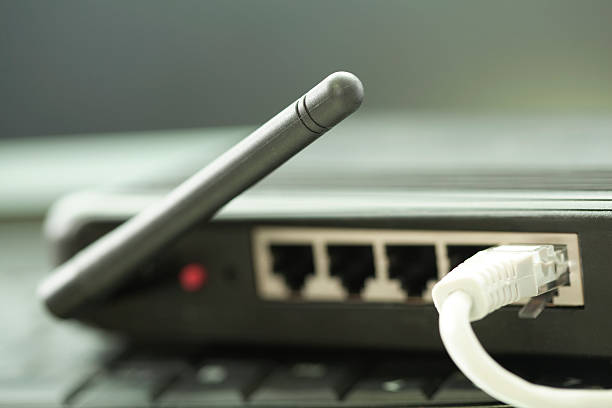
DSL is a full form of digital subscriber line, which means a broadband internet technology that uses existing telephone lines to transmit data. Moreover, it delivers faster internet than dial-up and also allows simultaneous voice and data transmission. This is the condition that made DSL a go-to solution during the early phases of broad brand expansion.
DSL works by splitting the telephone line into different channels, such as one for voice, one for uploading data and another for downloading. A DSL modem connects to the line and processes the incoming and outgoing signals. These signals travel from the user’s premises to the provider’s exchange. In addition, DSL is a bit different from other cable internet in that it distributes bandwidth among multiple users. However, DSL offers a direct line with improved stability, but its speed still depends on the distance from the local exchange. This article will explore the advantages and disadvantages by comparing other internet connection stability.
1. No new wire needed
2. Access to phone and internet
3. Dedicated line to the home with an affordable option
4. Actively support
1. Speed dependency on the individual’s distance
2. Access to phone and internet
3. Slow data uploading
4. Limited bandwidth and installation limitations
One of the biggest perks of DSL is that it uses existing telephone lines at home, which means that it does not require an extra wire or the requirement to dig up streets for internet access. This can make DSL faster and cheaper to install in comparison to other fibre.
DSL is not like other networks that dial up the phone line, but it allows its users to be online and make calls at the same time. It is possible because of a splitter that separates the internet and voice signals. Moreover, DSL is always on because a person does not have to connect each time to browse the internet and is also ready to go wherever they want. It is counted as a big improvement in network connection facilities for daily life use.
DSL cable internet is different from other connection servers, as other cable internet speeds may slow down due to the shared bandwidth with neighbours. This action shows that DSL gives a dedicated connection with improved speed and consistent connection throughout the day. Moreover, it is more affordable than other cable or fibre internet. It provides different facilities for users, such as browsing, email, streaming Netflix in HD or working from home without loading and buffering.
DSL is good for a working home condition or for business accessibility with a faster version and more capabilities. In addition to speed testing, it ensures that individuals get the numbers they pay for by offering fast and friendly tech support over the phone or by email. That means a user does not have to wait until Monday if they need to get back online today, and it also provides on-site assistance if required. Moreover, in terms of regular updates and regular maintenance. When it comes to updates and regular maintenance, the best approach is a non-intrusive one. Using the high-speed DSL benefits its users with security precautions and also safeguards the data privacy of service users.
One of the biggest disadvantages of DSL is that the speed of the internet depends on how close a service is to the provider’s equipment, known as a DSLAM. This connection often exists between the central office of a network service provider and the client location, or on local loops constructed inside buildings or campuses. Moreover, the more distant a service user stands from it, the less reliable the connection they will provide. It means that the connection's stability and speed depend on the distance that the service user is covering from the devices.
DSL speeds are good for light internet users, but do not expect lightning-fast downloads or 4k video streaming. Moreover, if a service user has a household with different devices, including gamers or people streaming on multiple TVs, this may not be enough for service users who require the internet for heavy purposes.
Most DSL plans are asymmetrical, which means that the uploading speed is much slower than the download speed. This shows that watching videos or browsing is fine, but uploading large files like videos to YouTube or backing up to the cloud will take more time in comparison to other internet connections. However, it shows that DSL may not be enough for service users who require more internet for heavy purposes. This may include different service users, including YouTubers, online gamers, remote business analysts and online streamers. In addition, DSL services are provided by telephone companies, and in some areas, there may be limited options for service providers that can limit the ability of users to choose the best service provider or the best plan for their needs.
DSL technology provides limited bandwidth, which means that it is not suitable for heavy data usage or for remote business work with multiple users who require a high-speed internet connection. Moreover, DSL technology depends on copper telephone lines that can be prone to interference from other devices, which include microwaves, televisions or other electronic devices. On the other hand, DSL technology requires the installation of a modem and a DSLAM, which can be expensive and time-consuming for service users. Moreover, it may also require additional wiring and infrastructure that can be difficult in different areas. However, DSL connections may be vulnerable to hacking or other security breaches, just like other internet connections. This means the user needs to take proper security measures to protect the devices and data.
However, DSL utilises old copper telephone lines for transferring digital data, which includes internet downloads and uploads, along with VIP calls and conventional phone signals. It runs at different frequencies in comparison to the phone signals. DSL has multiple advantages and disadvantages, such as not needing extra wires, providing access to internet and telephone services at the same time and also providing active support.

This post has been authored and published by one of our premium contributors, who are experts in their fields. They bring high-quality, well-researched content that adds significant value to our platform.


